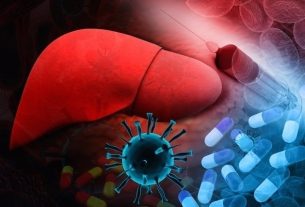Flexitarianism is a lifestyle where the intake of foods of plant origin, such as whole grains, fruits, vegetables and legumes, is prioritized, and the consumption of animal protein, such as eggs, beef, fish and chicken, is reduced.
The flexitarian diet, also known as semi-vegetarian, is normally adopted by people who want to reduce their meat consumption or for those who want to start a vegetarian diet, but are having difficulties.
Flexitarianism, which is a type of plant-based diet, can help prevent some diseases, such as high blood pressure, obesity, diabetes and cancer, in addition to promoting environmental protection, reducing water use and gas emissions greenhouse effect, for example.
Read too: Plant-based diet: what it is, benefits and how to do it (with menu)

Main benefits of flexitarianism
Flexitarianism can promote several health benefits, such as:
- Prevent cardiovascular diseases, because a greater intake of fruits and vegetables helps fight free radicals and improve artery health, preventing diseases such as high blood pressure, atherosclerosis and heart attack;
- Promote weight loss, since greater consumption of foods rich in fiber, such as whole grains, fruits, vegetables and legumes, promotes satiety, reducing hunger throughout the day;
- Reduce the risk of cancer, as foods rich in vitamins and antioxidants help protect healthy cells against damage caused by free radicals;
- Avoid diabetes, because fiber, present in foods such as whole grains, fruits and vegetables, slows down the absorption of sugar from the diet, controlling blood glucose levels.
Furthermore, flexitarianism can also help preserve the environment, as it promotes a reduction in greenhouse gas emissions, reduces deforestation and water use.
How to begin
According to the creator of flexitarianism, American nutritionist Dawn Jackson Blatner, to start this diet you should gradually increase your intake of vegetables and fruits. Furthermore, it is also important to reduce the consumption of animal protein, such as eggs, beef, chicken and fish.
Therefore, this diet should be divided into 3 phases:
- Beginner phase: At this stage, it is suggested not to eat meat for 2 days throughout the week. In addition, the total meat intake on the other 5 days of the week should be up to 790 g;
- Advanced phase: in the advanced stage, it is recommended to go 3 to 4 days a week without eating meat, consuming up to 510 g of meat on other days of the week;
- Chamfer expert: It is suggested to go meat-free for 5 days throughout the week. Furthermore, you should only eat 255 g of meat on the other 2 days of the week.
It is important to remember that there is still no single definition of the flexitarian diet. Thus, a flexitarian person can go without eating meat once a week; reduce the amount of protein in meals; or even eat meat only once a week, for example.
Therefore, before starting the flexitarian diet, it is advisable to consult a nutritionist so that a dietary plan can be created according to each person’s goals and nutritional needs.
Foods that should be prioritized
During the flexitarian diet, natural foods should be prioritized. Thus, the foods that should be consumed during flexitarianism are:
- vegetable proteins, like tofu, tempeh and seitam;
- Legumes, such as beans, chickpeas, edamame, lentils, soybeans and black-eyed peas;
- Whole grains, such as brown rice, wholemeal bread, quinoa and oats;
- Fruits, such as apple, pear, avocado, orange, watermelon, papaya, cashew and acerola;
- Vegetables and greens, such as lettuce, tomato, jiló, chayote and pumpkin;
- Tubers, such as cassava, potatoes, sweet potatoes, yams and yacon;
- Vegetable drinks, as a drink made from soy, almonds or rice;
- Seeds and oilseeds, such as peanuts, flaxseed, sesame and pumpkin seeds;
- Herbs and spices, such as basil, turmeric, mint, oregano and ginger;
- Drinks, such as water, teas and coffee.
Additionally, vegetable oils such as olive oil, avocado oil and flaxseed oil are also recommended during this diet.
Consume in moderation
In flexitarianism, it is recommended to consume the following foods in moderation:
- Red meat, such as beef, pork and lamb;
- Built-ins, such as ham, mortadella, sausage and bratwurst;
- Fish, such as salmon, sardines, sea bass, boyfriend and tuna;
- Bird meat, such as chicken, duck and turkey;
- Refined carbohydrates, such as white rice, white bread and white pasta;
- Dairy, such as milk, cheese and yogurt;
- Fast food type meals, such as hamburgers, fries, nuggets and milkshakes.
Furthermore, it is also recommended to limit the consumption of sweet foods, such as sugar, jams, ice cream, soft drinks, cakes and cookies.
Example of a flexitarian diet menu
The following table provides an example of a 3-day flexitarian diet menu:
This menu is just an example of how the flexitarian diet can be followed. For best results during this diet, it is recommended that you consult a nutritionist so that a dietary plan can be created according to your individual needs.

Sign up for our newsletter and stay up to date with exclusive news
that can transform your routine!
Warning: Undefined array key "title" in /home/storelat/public_html/wp-content/plugins/link-whisper-premium/templates/frontend/related-posts.php on line 12
Warning: Undefined array key "title_tag" in /home/storelat/public_html/wp-content/plugins/link-whisper-premium/templates/frontend/related-posts.php on line 13



